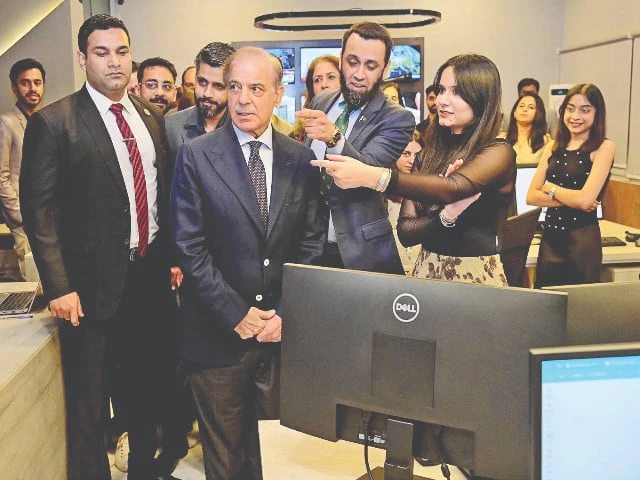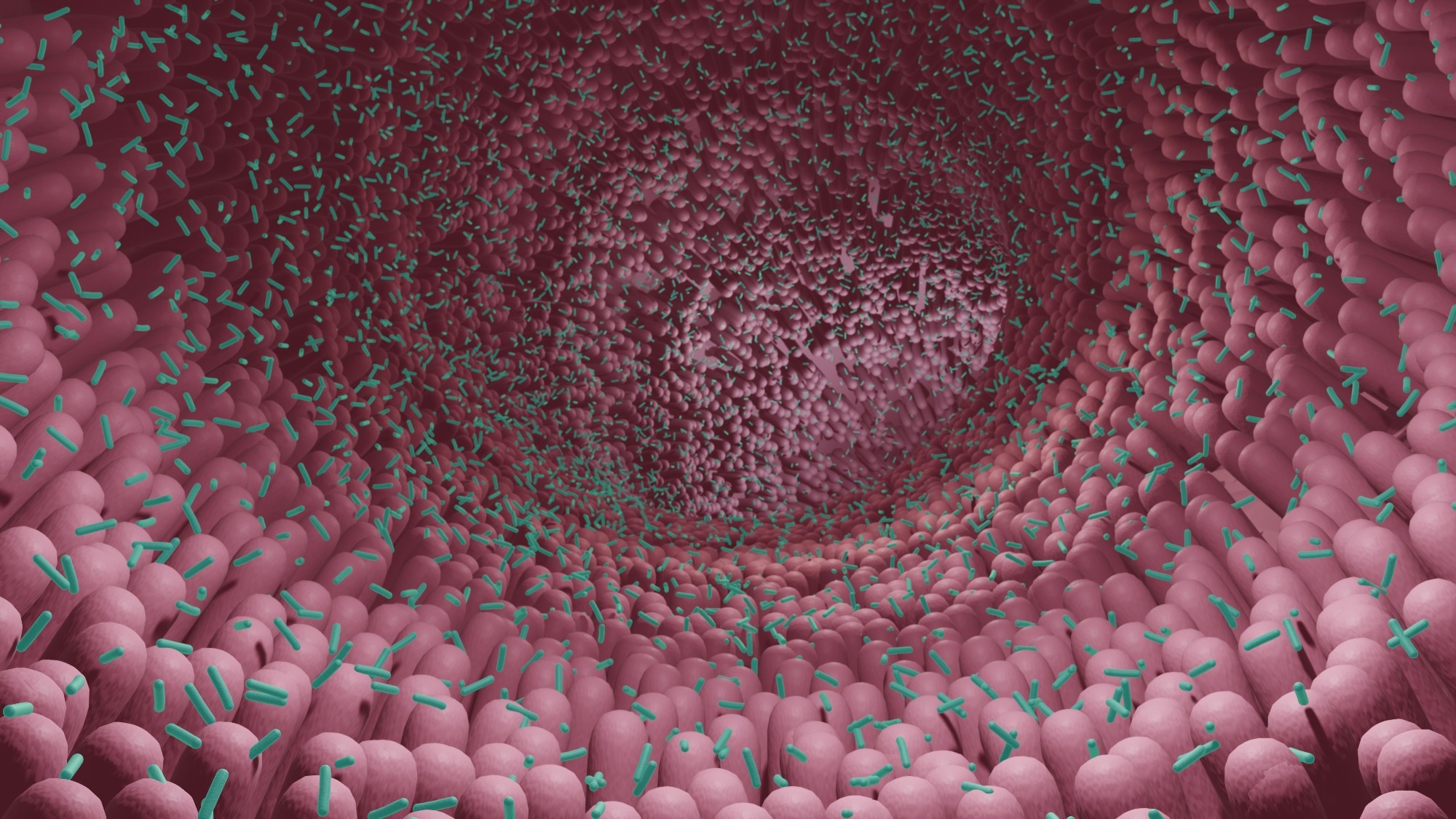
Pakistan reiterated its commitment to combating cancer and strengthening international healthcare cooperation at a side event of the International Atomic Energy Agency (IAEA) General Conference in Vienna, titled “Beyond Boundaries: The Rays of Hope Anchor Centres Network and the Future of Cancer Care.”
Delivering Pakistan’s statement, Chairman of the Pakistan Atomic Energy Commission (PAEC), Dr. Raja Ali Raza Anwar, noted that more than 180,000 new cancer cases are reported annually in the country. To address this burden, PAEC has established 20 cancer hospitals nationwide, serving over 80 percent of patients and providing diagnostic and treatment services either free of charge or at subsidized rates — directly supporting the UN Sustainable Development Goal (SDG) 3 on Good Health and Well-Being.
He highlighted Pakistan’s active role in the IAEA’s Rays of Hope initiative, sharing expertise, training, and best practices with developing countries under South-South Cooperation and SDG 17 on Partnerships for the Goals.

PM Shehbaz Sharif on Wednesday emphasized that the government was focused on transforming the youth bulge from a challenge into an economic opportunity by providing productive jobs, modern skills, and vocational training.
Speaking in an exclusive interview with Pakistan TV Digital, he outlined a future where Pakistan leverages its “youth bulge,” expands its agricultural sector, and implements vocational training programs to convert demographic challenges into economic opportunities.
The prime minister pointed out that back in 2022-23, Pakistan was on the verge of default but due to the entire economic team, and his personal efforts, the government managed to stabilize the economy.

By Elisa Anzolin, Dominique Patton and Mimosa Spencer
MILAN (Reuters) -Armani’s economic value goes well beyond its stagnating fashion business and potential bidders are likely to take a close look at sales generated by fragrances and frames sold under the late designer’s name, industry sources and analysts say.
The fashion house founded by Giorgio Armani 50 years ago reported revenue of 2.3 billion euros ($2.71 billion) last year, down 5% from a year earlier amid a global luxury slowdown and as a turn to casualwear reduces the appeal of its classic suits.
But filings by the Italian company show that figure nearly doubles, to 4.25 billion euros, with the inclusion of sales from beauty and eyewear – made under licence since 1988 by L’Oreal and EssilorLuxottica respectively.
Giorgio Armani’s will, published last week following his death on September 4, named those two companies alongside French luxury giant LVMH as potential buyers of the business.
Armani-branded perfumes and beauty products in L’Oreal’s portfolio generate around 1.5 billion euros a year, industry sources and analysts estimate, while Armani eyewear contributes about 500 million euros for EssilorLuxottica.
Just over one-tenth of that goes to the Armani group as royalties, according to Reuters calculations based on filings.
Sales of licensed products could be fundamental to determining the price of Armani in a possible transaction, according to an industry source who has worked at a potential suitor.
While operating profit for Armani group, which depends largely on fashion, shrank to 3% of net revenue last year, the beauty and eyewear businesses are potentially more lucrative. L’Oreal reported an overall operating profit margin of 20% last year, while EssilorLuxottica’s stood at nearly 17%.
The Armani brand is “great eyewear, great beauty, a great legacy, but the ready-to-wear brand today is not the hottest on the planet,” HSBC analyst Erwan Rambourg told Reuters.
LICENCES CENTRAL TO POTENTIAL SALE
Armani’s licence with EssilorLuxottica, in which the designer owned a 2% stake, was renewed in 2023 for 15 years. And the deal with L’Oreal runs until 2050.
Aware of the importance of these collaborations, Giorgio Armani’s will states that priority for any sale should be given to groups with which his company “already has a partnership”.
EssilorLuxottica and L’Oreal said last week they would assess a possible investment in Armani, which the will says should initially be a 15% stake. A second, larger stake should be transferred later to the same buyer or a listing sought, the will says.
LVMH, controlled by French billionaire Bernard Arnault, said it was honoured to be named as a potential partner.
Maintaining control of the sizeable Armani licence through a large stake purchase would be more significant for L’Oreal than for EssilorLuxottica.
A bid by L’Oreal for Armani may follow the precedent set by beauty group Estee Lauder, which purchased fashion label Tom Ford in 2022, keeping the fragrances but granting long-term licences to other players for apparel and eyewear.
Armani is “highly regarded” as a beauty brand, said Morningstar analyst Dan Su. It is also one of the best-known names in men’s fragrances, a segment that is booming – L’Oreal CEO Nicolas Hieronimus told Reuters in July that its “Stronger with You” fragrance was a “phenomenon” among younger men.
Managing a fashion label in addition to beauty could add complexity for L’Oreal.
And despite their long collaboration, Armani would be a tough nut to crack for EssilorLuxottica, which dipped into fashion by acquiring streetwear brand Supreme in 2024, but has stressed its aim to become a med-tech group.
LVMH, with its depth and breadth of luxury expertise, would have the ability to manage a full acquisition that brings in-house the full suite of Armani’s sprawling businesses, several industry experts said.
The French conglomerate could manage eyewear via its Thelios unit, while beauty is already a core business.
But LVMH may struggle to bring Armani beauty and eyewear in-house any time soon given the existing long-running licences.
Boss Arnault would also have to cohabit with a foundation set up by Armani that will hold de facto veto powers.
“LVMH and L’Oreal are like chalk and cheese,” said Rambourg.
($1 = 0.8474 euros)
(Reporting by Elisa Anzolin and Lisa Jucca in Milan, Mimosa Spencer and Dominique Patton in Paris; Additional reporting by Anousha Sakoui and Elvira Pollina; Editing by Lisa Jucca, Richard Chang and Catherine Evans)

In a new video shot entirely on the iPhone 17 Pro and iPhone 17 Pro Max, photographer Tyler Stalman takes an in-depth look at the cameras on the new iPhone 17 lineup, with a special focus on the Pro models. Here’s what he found.
For the past few years, Stalman has been publishing a comprehensive look at the cameras of new iPhones. This year, he focused on the Pro line, particularly how they compare to previous Pro generations.
He also took the time to talk about new pro software features, as well as the cameras on the iPhone 17, and iPhone 17 Air.
According to Stalman, “the selfie camera is probably the biggest update of the year,” with its new square sensor and Center Stage feature, which automatically switches between portrait and landscape orientations (a feature which, to be honest, he decided to turn off).

Stalman says that both picture quality and the comfort of holding the iPhone vertically while shooting it horizontally are very welcome additions.
As for the iPhone 17 and iPhone Air, Stalman says that most people will probably not notice the difference between their main cameras and the main cameras of the Pro models, then he moves on to the iPhone 17 Pro.
Stalman notes that while the main camera hasn’t changed, the real improvements show up in how the iPhone 17 Pro handles ProRAW shooting, with the JPEG-XL Lossy format turned on:
You don’t lose any of the detail in your photo. You still have all the flexibility of RAW, but it’s a fraction of the size.
He also compared the iPhone 17 Pro against shots from photographer Derek Boniecki from The Trek Blog, who uses an iPhone 14 Pro Max. In side-by-side tests, the 17 Pro produced cleaner images with less noise and more accurate colors, especially in challenging lighting or zoomed-in pictures.
During the rest of the video, Stalman analyzes multiple aspects of the new iPhone 17 Pro and iPhone 17 Pro Max cameras against previous Pro and Pro Max models, including video shooting and fantastic stabilization, even in zoomed-in shots.
In a nutshell (and you should really watch the video for the full analysis and nuance), he concludes that when it comes to the cameras, the iPhone 17 Pro and iPhone 17 Pro Max might be worth the upgrade if you’re coming from an iPhone 15 Pro or earlier. But again, there’s much more to that, and you should watch the video.
He also notes that this year, Apple has pushed the iPhone 17 Pro and 17 Pro Max cameras further toward Hollywood-style use cases, which is also a win for casual users, who can also enjoy these benefits (although some may require additional software and hardware).
Watch the full video below:
FTC: We use income earning auto affiliate links. More.


The Indus River continued to experience a low-level flood at Kotri Barrage, while inflows declined at Guddu and Sukkur barrages amid return of normalcy in the rivers in Punjab, flood data provided by the irrigation and disaster management officials on Wednesday.
According to Flood Forecasting Division, inflows at Kotri were increasing slightly but despite this limited rise, no increase was made in downstream discharges over the past 24 hours. Also there was a sharp decline at Guddu Barrage, resulting in reduced inflows at Sukkur Barrage.
From 6pm Tuesday to 6pm Wednesday, inflows at Kotri Barrage rose by only 3,535 cusecs. According to the Irrigation Department, inflows at Kotri Barrage stood at 304,388 cusecs, against outflows of 289,098 cusecs.
At Sukkur Barrage upstream inflows reached 569,890 cusecs, with outflows at 518,120 cusecs – a decrease of 1,910 cusecs in the past 24 hours, with no change in outflows. Inflows at Guddu Barrage, were 551,851 cusecs and outflows 523,842 cusecs – decline of 53,607 cusecs.
In Punjab, a spokesperson for the Provincial Disaster Management Authority (PDMA) said that all the rivers were flowing at normal levels. “Flows in the Indus, Jhelum, and Ravi rivers are normal,” the spokesperson said.
“The Chenab is also flowing at normal levels at Marala, Khanki, Qadirabad, and Trimmu. The Sutlej River has a medium-level flood at Ganda Singh Wala, while Suleimanki and Islam headworks are experiencing low-level floods. In DG Khan, hill torrents are flowing normally.”
At Panjnad, according to the PDMA spokesperson, a low-level flood is persisting, with flows decreasing to 194,000 cusecs. The spokesperson added that the district administrations remained on alert in case of any eventuality.
In Islamabad, Federal Minister Moeen Wattoo confirmed that Panjnad was facing a low-level flood but stressed that water levels were falling. “High-level floods persist at Guddu and Sukkur barrages, but Kotri remains at a low flood level with stable flows,” he said.
He stated that Tarbela Dam has been filled to 100% capacity since 27 August, while Mangla Dam is at 96% with four feet of storage remaining. “The government’s focus is on assessing damages and providing relief to affected population, with accelerated relief efforts.”
Meanwhile, the Punjab PDMA forecast rainfall in most districts over the next 24 hours, with the 11th spell of monsoon rains continuing until September 19. it warned of increased water flows in nullahs and streams of Rawalpindi, Murree, and Galiyat on September18-19.
According to the PDMA, rainfall was expected in Rawalpindi, Murree, Galiyat, Attock, Chakwal, Jhelum, Gujranwala, Lahore, Gujrat, and Sialkot, as well as Narowal, Hafizabad, Mandi Bahauddin, Okara, Sahiwal, Kasur, Jhang, Sargodha, and Mianwali.

Stefon Diggs is making headlines both on and off the field after rapper Cardi B confirmed she’s expecting his child. The announcement quickly collided with a resurfaced Vikings locker room video, where former teammates jokingly warned against Diggs dating their sisters—fueling controversy as fans connect past perceptions with present reality.
Just as Cardi B confirmed she is expecting her first child with New England Patriots receiver Stefon Diggs, an old locker room video from his Minnesota Vikings days is going viral again. The resurfaced 2017 clip shows teammates joking about which player they would least want dating their sister. Multiple players, including Adam Thielen and Dalvin Cook, pointed to Diggs. Thielen even explained why, saying Diggs wasn’t someone he’d feel comfortable introducing to family.At the time, Diggs laughed off the responses, insisting he was “a great guy.” But with his personal life now dominating headlines, the throwback footage has taken on new meaning, sparking fresh conversations among fans online.
The Grammy-winning rapper revealed her pregnancy on CBS Mornings, describing Diggs as a steady presence during this new chapter. “He gives me confidence and security,” she said, adding with a laugh that she’ll need strong album sales to keep up with baby expenses. This will be Cardi B’s fourth child but her first with Diggs.Reporters later pressed Diggs for a comment before Patriots practice, but he kept things short, saying he doesn’t like to dive into personal matters. Still, the couple’s growing family has become a trending topic just months after they went public with their relationship on Instagram.Also Read: Stefon Diggs’ complicated love life: From baby mama drama to a controversial age gap with an ex girlfriend before he met Cardi BOn the field, Diggs is still finding his rhythm in New England. Through two games, he’s caught 10 passes for 89 yards but has yet to score. While the viral video paints a playful picture of how teammates once viewed him, his current focus seems to be splitting time between the Patriots’ offense and preparing for fatherhood alongside Cardi B.

Introduction
Traditional approaches to supporting neonatal gut health
The rise of modern neonatal probiotics
Integrating genomic tools into probiotic design
Challenges and regulatory considerations
The future landscape
Conclusions
References
Further reading
From ancient garlic cures to precision-engineered microbes, discover how neonatal probiotics are being reshaped by genomics and synthetic biology to safeguard the most vulnerable patients.
Image Credit: cristinarosepix / Shutterstock.com
The initial 28 days of a newborn’s life, which are otherwise known as the neonatal period, represent a critical window for physiological development. During this period, the newborn gastrointestinal tract transitions from an almost sterile environment to a complex and dynamic microbial ecosystem.1
This nascent gut microbiome is uniquely vulnerable, particularly to the effects of environmental factors like delivery mode, gestational age, feeding practices, and early-life antibiotic exposure.1 Preterm infants are particularly susceptible, as they often experience delayed and aberrant colonization patterns that increase the risk of life-threatening or chronic conditions.1
Establishing a healthy gut microbiome is essential to achieve maturation of the host immune system. Early microbial colonizers are considered the primary architects of immunity, as these microorganisms engage in a bidirectional interplay with host immune cells that co-evolve to establish competence, tolerance, and homeostasis.1
Disruptions to this colonization process, often caused by factors such as cesarean section delivery, formula feeding, or antibiotic exposure, have been linked to growth faltering, inflammation, and an increased long-term risk of metabolic and immune disorders.1
Aberrant disruptions to infant gut microbiota have been implicated in the pathophysiology of severe neonatal diseases like necrotizing enterocolitis (NEC), as well as a significantly increased risk of neonatal mortality.1
Your Baby’s Gut Microbiome | GutDr Mini-Explainer
Garlic (Allium sativum) has been widely used throughout history for its perceived immune-enhancing ethnobotanical properties. Recent chemical analyses have validated the antimicrobial basis of these traditional uses.2
Most ethnobotanical practices involve crushing a garlic clove, a process that leads to the enzymatic conversion of allin into allicin through allinase.2 Allicin and its derivatives ajoenes and allyl sulfides exhibit broad-spectrum bactericidal, anti-biofilm, and anti-quorum-sensing activities, primarily through the formation of disulfide bonds with the sulfhydryl groups of essential microbial enzymes.2
Garlic also exhibits prebiotic properties, as this herb selectively inhibits pathogenic enterobacteria while having a mitigated effect on beneficial Lactobacillus species.2
Despite scientific evidence confirming its potential neonatal benefits, the lack of standardization in dosing, purity, and preparation limits its clinical use.1,3 These limitations create significant safety risks, particularly to infants’ immature organ systems that are susceptible to enhanced toxicity.3 For example, the topical application of raw crushed garlic has been shown to cause severe chemical burns on the delicate skin of infants, a side effect that is rarely observed in adults.4
Numerous systematic reviews and meta-analyses support the judicious use of specific probiotic strains to reduce the incidence of severe NEC and all-cause mortality in preterm infants.1,4,5 One example includes a recent comprehensive meta-analysis of nine randomized controlled trials (RCTs) involving 7,180 preterm infants, which reported that supplementation with Bifidobacterium bifidum G001 (BBG001) significantly reduced NEC, all-cause mortality, and risks.5
However, not all probiotics demonstrate consistent efficacy, and strain-specific effects remain a central challenge in neonatal applications.6,7
Certain probiotic strains exhibit different genetic capacities to metabolize human milk oligosaccharides (HMOs), which are complex carbohydrates in breast milk that are indigestible to the infant and most other gut microbes.6 As a result, Bifidobacterium longum subspecies infantis, a key gut colonizer in healthy breastfed infants, experiences a competitive advantage that allows it to dominate the early gut ecosystem and exclude potential pathogens through resource exclusion.6
Certain metabolic byproducts of HMO fermentation, primarily short-chain fatty acids (SCFAs) such as acetate and butyrate, can enhance the expression of tight junction proteins, thereby supporting gut barrier integrity. These biomolecules may also modulate the neonatal immune system by promoting anti-inflammatory pathways.6
 Image Credit: ART-ur / Shutterstock.com
Image Credit: ART-ur / Shutterstock.com
High-throughput technologies, such as whole-genome sequencing (WGS), have enabled the identification of strains, which supports the development of precision probiotics in neonatal care.7 Bioinformatics analyses subsequently analyze genomic data to enable in silico risk screening for virulence factor genes, toxin-producing genes, and antibiotic resistance genes (ARGs) before the strain can be considered for use in infants.7
Annotation tools can also be used to identify genes involved in metabolic pathways and predict a strain’s ability to produce beneficial compounds, such as SCFAs, tolerate host defenses, and/or adhere to the intestinal mucosa.1,4,7 Synthetic biology, an interdisciplinary field that applies engineering principles to biology, is rapidly being explored to incorporate novel functionalities into safe probiotic chassis.8
Examples include engineered probiotics designed to detect gut pathogens, secrete antimicrobial peptides, or modulate host immune responses, thereby offering therapeutic strategies beyond those of natural strains.8
These probiotic strains can be further enhanced by precision genome editing tools, such as CRISPR-Cas systems, and synthetic gene circuits, which are engineered genetic pathways that function like molecular computers.8,9
Administering live microorganisms to immunologically immature infants, especially those who were born preterm, is associated with numerous risks, including probiotic-associated sepsis. During this type of severe reaction, the probiotic microorganism may translocate across a compromised gut barrier, causing a systemic and potentially fatal infection.7
Global regulatory landscapes have historically treated probiotics as dietary supplements, resulting in poor standardization and a lack of mandated safety or efficacy testing.7 This regulatory gap has resulted in tragic consequences, as demonstrated in October 2023, when the United States Food and Drug Administration (FDA) issued a warning to healthcare providers after linking probiotic products to over two dozen adverse events since 2018, including one infant death.10
The FDA emphasized that no probiotic has yet been approved as a drug or biologic for infants of any age, underscoring the regulatory hurdles still to be overcome.10
The FDA has since updated its regulatory framework on probiotic supplements. To this end, any probiotic intended to treat, mitigate, or prevent a disease must now undergo the same rigorous Investigational New Drug (IND) application process as any other pharmaceutical product.10
The modern rate of rapid technological advancement, combined with the decreasing cost of sequencing and growing sophistication of synthetic biology tools, may enable the development of “N-of-1” therapeutics.
This involves sequencing an infant’s microbiome at birth using computational models to identify specific microbial or functional deficiencies. Thereafter, infants would be administered a personalized probiotic formulation that has been specifically engineered to restore optimal physiological functionality.8,9
Next-generation probiotics (NGPs), such as Akkermansia muciniphila and Faecalibacterium prausnitzii, are under investigation for tailored therapeutic use; however, their long-term safety in neonates remains to be established.7,8
The evolution of neonatal gut health interventions from garlic-based approaches to the design of genomically defined and synthetically programmed probiotics represents a profound advancement in medical science.
Significant safety, manufacturing, and regulatory challenges must be overcome before a ‘theranostics’ future is achieved. Precision probiotic therapies informed by genomics and enabled by synthetic biology have the transformative potential to shift neonatal care from a reactive to a proactive paradigm.
Last Updated: Sep 17, 2025

Unlock the White House Watch newsletter for free
Your guide to what Trump’s second term means for Washington, business and the world
Jimmy Kimmel’s late-night television show has been pulled off the air “indefinitely” by Disney-owned ABC after comments he made on Monday about the man accused of killing conservative activist Charlie Kirk.
The comedian, a well-known figure who has hosted the Oscars awards ceremony, suggested the alleged killer was a supporter of President Donald Trump’s Maga movement.
Kimmel’s broadcast provoked criticism, including from Brendan Carr, chair of the Federal Communications Commission, the US regulator.
ABC on Wednesday said Jimmy Kimmel Live “will be pre-empted indefinitely”.
Trump welcomed the show’s suspension. “Congratulations to ABC for finally having the courage to do what had to be done. Kimmel has ZERO talent, and worse ratings than even Colbert, if that’s possible,” the president posted on his Truth Social platform.
Disney’s decision marks an escalation in Trump’s campaign against liberal-leaning media figures, with the FCC increasingly deployed as a political tool.
“That leaves Jimmy and Seth, two total losers, on Fake News NBC. Their ratings are also horrible. Do it NBC!!!”, Trump added.
The controversy stemmed from Monday’s broadcast, when Kimmel said: “We had some new lows over the weekend with the Maga gang desperately trying to characterise this kid who murdered Charlie Kirk as anything other than one of them and with everything they can to score political points from it.”
The move to pull Jimmy Kimmel Live! comes two months after CBS cancelled The Late Show with Stephen Colbert. Colbert had criticised the network’s owner, Paramount, for its decision to settle a defamation suit brought by Trump, as it sought FCC approval for a deal with Skydance.
Trump then shortly after praised Colbert’s cancellation, posting: “Next up will be an even less talented Jimmy Kimmel.”
Shortly thereafter, the FCC approved CBS’s sale to Skydance.
Carr, who Trump appointed to the FCC, has made clear the media regulator is prepared to exert pressure on broadcasters.
Carr, earlier on Wednesday, called Kimmel’s on-air comments “the sickest conduct possible” and warned his agency could move to revoke ABC affiliate licences unless Disney acts. “We can do this the easy way or the hard way,” he said.
ABC’s announcement came shortly after Nexstar, a large network of local TV stations, dropped Kimmel’s show. Nexstar said it “strongly objects to recent comments made by Mr Kimmel concerning the killing of Charlie Kirk”.
Kirk, a conservative activist and Maga influencer, was shot in Utah last week — prompting national condemnation.
State officials on Tuesday said the mother of the man charged in the case, Tyler Robinson, had said Robinson had “become more political and had started to lean more to the left”.